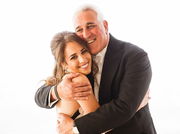
Reuters
Formula One F1 – Dutch Grand Prix – Circuit Zandvoort, Zandvoort, Netherlands – September 4, 2022 Alfa Romeo’s Valtteri Bottas car is removed from the track after the race REUTERS/Yves Herman

Reuters
Formula One F1 – Dutch Grand Prix – Circuit Zandvoort, Zandvoort, Netherlands – September 4, 2022 Alfa Romeo’s Valtteri Bottas car is removed from the track after the race REUTERS/Yves Herman
Apart from hosting the current World Champion Max Verstappen’s home race, the Zandvoort circuit is also popular for other reasons. This race course is intricately linked to the Second World War that ravaged the European nations and left a scar on the pages of history. It all started back in 1939 when a few amateur racers organized a contest on a temporary circuit between the Zandvoort dunes. The wild success of the event led to plans for a permanent circuit which got support from the then-Mayor of Zandvoort, Henri van Alphen.
Watch What’s Trending Now!
But Zandvoort was not built in a day. While the townsmen wanted to get their own racing circuit, the World War broke out. The German Nazis deposed van Alphen, thus delaying the construction of the Zandvoort Circuit. But this was nothing for the fearless van Alphen who still kept working on the race track. And finally, in 1948, Zandvoort opened its doors to the public for its first race as a permanent circuit.
Later on, Zandvoort became an official Formula 1 host as the ‘Grand Prix of the Netherlands’ occurred here. Even to this date, there is controversy regarding which circuit designer deserves credit for building the Zandvoort Circuit. However, according to the Grand Prix View magazine, Dutch race track designer John Hugenholtz did not take part in the construction of the Zandvoort Circuit. Rather, it was former Le Mans winner Sammy Davis who acted as Zandvoort’s track design advisor.
ADVERTISEMENT

ADVERTISEMENT
Despite its early success, Zandvoort disappeared from the F1 schedule until it appeared once again in 1958. From that season onwards, the Dutch GP was a regular event in F1 till 1985. But trouble started once CENAV, the company that was in charge of maintaining the track at that time, went out of business two years later. Despite this fact, there was a resurgence of the Dutch GP at Zandvoort in the 2000s–but how?
ADVERTISEMENT
Max Verstappen played a part in bringing the Dutch GP back to F1
Between 1970 and 1985, there were several accidents at Zandvoort that led to the belief that it was unsafe to host further races. The first accident was in 1970 when British F1 driver Piers Courage crashed his car and died on the spot during the Dutch GP, followed by Roger Williamson three years later who also lost his life in a similar way. Niki Lauda won the last race on that circuit in 1985 before it was closed for thirty-six years. In 2012, Zandvoort organizers hosted the “Historic Grand Prix” which attracted global attention with races involving some formula cars. A new management team instituted changes at Zandvoort four years later, taking the popularity of this circuit to new heights.

Reuters
Formula One F1 – Dutch Grand Prix – Circuit Zandvoort, Zandvoort, Netherlands – September 4, 2022 Red Bull’s Max Verstappen celebrates on the podium with the trophy after winning the Dutch Grand Prix, alongside second placed Mercedes’ George Russell and third placed Ferrari’s Charles Leclerc REUTERS/Yves Herman
Even in 2017, Zandvoort was already hosting some famous races like the Dutch GP for the FIA Formula 3 Championship. However, a final stroke came from Max Verstappen when he participated in that year’s Jumbo Race Dagen. Being one of the youngest Red Bull recruits, he was already the talk of the F1 town. Therefore, after taking part in three successive editions of Jumbo Race Dagen at Zandvoort, this course gained immense significance among race circuits. As a result, in 2019, FIA again revealed the Dutch GP as a part of the F1 championship series.
ADVERTISEMENT
With this, we will wrap up our account of the history of the Zandvoort circuit. Now, it is one of the most exciting tracks that boasts 14 high-speed corners. As the F1 circus is currently getting ready to race on this historic track, which racer do you think, will reign supreme at Zandvoort this year? Share in the comments below.
Top Stories
Adrian Newey’s Motorsport Masterpiece: RB17 vs Aston Martin Valkyrie, Which One Is Better?

Who Is Oscar Piastri’s Father, Chris Piastri? Co-Founder of Multibillion Dollar Automotive Company

3 Years After His Death, Niki Lauda’s Wife Brutally Disrespects Him to Initiate $32,000,000 Battle Against Own Children

Carlos Sainz & Ex Girlfriend Isa Hernaez Issue Contrasting Statements to Stir the Pot After Unexpected Breakup

Who Is Canadian F1 Billionaire Lawrence Stroll’s Daughter & Heiress Chloe Stroll?

ADVERTISEMENT
ADVERTISEMENT
ADVERTISEMENT

